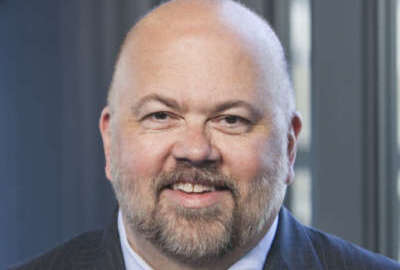What they’re saying about the new Schedule F
Reaction over the president's new executive order on the creation of a new Schedule F for certain policy-making positions ranges from "forget it!" to "finally!"...
The October before an election is supposed to bring a few unexpected surprises, and federal employees got one of their own last week in the form of a new executive order.
The order creates a brand new class of career “confidential, policy-determining, policy-making, or policy-advocating” positions called Schedule F. Under this new schedule, agency heads will have the flexibility to hire and fire individuals to those positions at will — a condition most current political appointees operate under today.
So far, the creation of a new Schedule F has elicited some feedback from federal employee organizations and members of Congress.
You know, reactions ranging from “forget it!” to “finally!”
We’ve also heard a few other words and phrases too. I’ll point you to the column from Jeff Neal, a federal human resources expert and former chief human capital officer at the Department of Homeland Security, for one of them.
To be completely clear, the EO does not reclassify these positions as Schedule C political appointees.
And there’s nothing in the executive order stating Schedule F employees will come and go at the start of each administration. They could, like current career feds, stick around beyond one administration and last well into another. But again, it’s up to their agency heads — which do change with each administration — to hire and fire them.
As we described last week, a few former federal executives said the order could impact a pretty broad swath of career positions, again, depending on how agency heads choose to interpret the EO.
Neal said the executive order would essentially increase the number of political appointees tenfold.
In new guidance issued Friday, the Office of Personnel Management said agencies have the discretion to designate positions under Schedule F based on other characteristics not explicitly named in the order.
The descriptions included in the EO are “guideposts,” and it’s up to OPM to make the final call on what positions should and shouldn’t transfer to Schedule F.
Neal said the term “policy-advocating” is broad and may cover tens of thousands of positions. That could include C-suite positions not a part of the Senior Executive Service, as well as budget analysts, congressional and public affairs specialists and others who have regular contact with an agency head appointed by the president.
For employees in small agencies, the definitions described in the executive order might cover the entire organization, maybe with a few exceptions. Other agencies deal almost entirely with policy. The Office of Management and Budget comes to mind, where career feds have served through several administrations.
In praising the executive order, House Oversight and Reform Committee Ranking Member James Comer (R-Ky.) suggested political appointees once held these kinds of policy-making positions, but the “growth of the bureaucracy” over time changed that.
“Our founding fathers never envisioned a massive unelected, unaccountable federal government with the power to create policies that impact Americans’ everyday lives,” he said in a statement. “President Trump has long pledged to take on this bureaucracy and restore power to the people by draining the swamp.”
But employee unions, federal management and advocacy organizations and good government groups are not happy.
On a scale from medium to red hot opposition, consider the following reactions from three federal employee associations.
First up, the Federal Managers Association, which said it feared the executive order would create additional recruitment and retention challenges for the career federal workforce. It could be a turn-off for younger employees who enter government as a GS-10 or 11 policy analyst but don’t — for whatever reason — see a future as a Schedule F appointee farther along in their careers.
“One of the best recruiting tools for the federal workforce has always been the structure and security of federal jobs, despite being paid less than our private sector counterparts,” FMA President Craig Carter said Friday. “This EO eliminates that incentive to work for less pay but greater fairness and security that has inspired many to join or remain in the civil service. We are concerned that people who want to serve their country in ways other than the military may not consider the civil service after this type of systemic change in focus and purpose.”
Then there’s the National Active and Retired Federal Employees (NARFE) Association, which said the creation of Schedule F “threatens to form a massive black hole in the center of the competitive civil service system, swallowing it up entirely, to the detriment of government of, by and for the people.”
Finally, SEA offered up a page-and-a-half statement on the order.
“With this order, there is no longer an independent civil service,” SEA’s interim president, Bob Corsi, said. “This is how the party-run governments of authoritarian-led countries are organized and staffed — by political leadership who historically succeed by serving an elite political class, rather than service to all citizens equitably.”
So what’s next for this executive order?
If you’re enthusiastic about the changes or anxious by them, they’re not coming immediately. The order gives agencies a total of seven months to review and finalize what positions should be part of Schedule F.
The first deadline comes in less than three months on Jan. 19. Yes, that’s a day before Inauguration Day, but for now, the significance and meaning behind that date seems to end there.
Then there’s the issue of how long this executive order may last, given the date on the calendar and the upcoming presidential election.
If the current administration wins a second term, expect House Democrats to try block it with some sort of legislation, probably attached to a major appropriations or defense policy bill.
A few of them, including House Armed Services Committee Chairman Adam Smith (D-Wash.) and Oversight and Reform Committee Chairman Carolyn Maloney (D-N.Y.), have suggested they’re looking into the possibility.
Of course, there’s nothing stopping a potential Biden administration from implementing this order, though some former federal executives believe it would be dead-on-arrival with the former vice president.
Stay tuned.
Nearly Useless Factoid
By Alazar Moges
We are all familiar with ZIP codes. But do you know what the ZIP actually stands for? In 1963, the Post Office Department introduced their Zone Improvement Plan. Originally intended for automated mail sorting, the ZIP codes became a social tool for organizing and displaying demographic information and much more.
Source: USPS OIG
Copyright © 2025 Federal News Network. All rights reserved. This website is not intended for users located within the European Economic Area.
Nicole Ogrysko is a reporter for Federal News Network focusing on the federal workforce and federal pay and benefits.
Follow @nogryskoWFED
Related Stories





